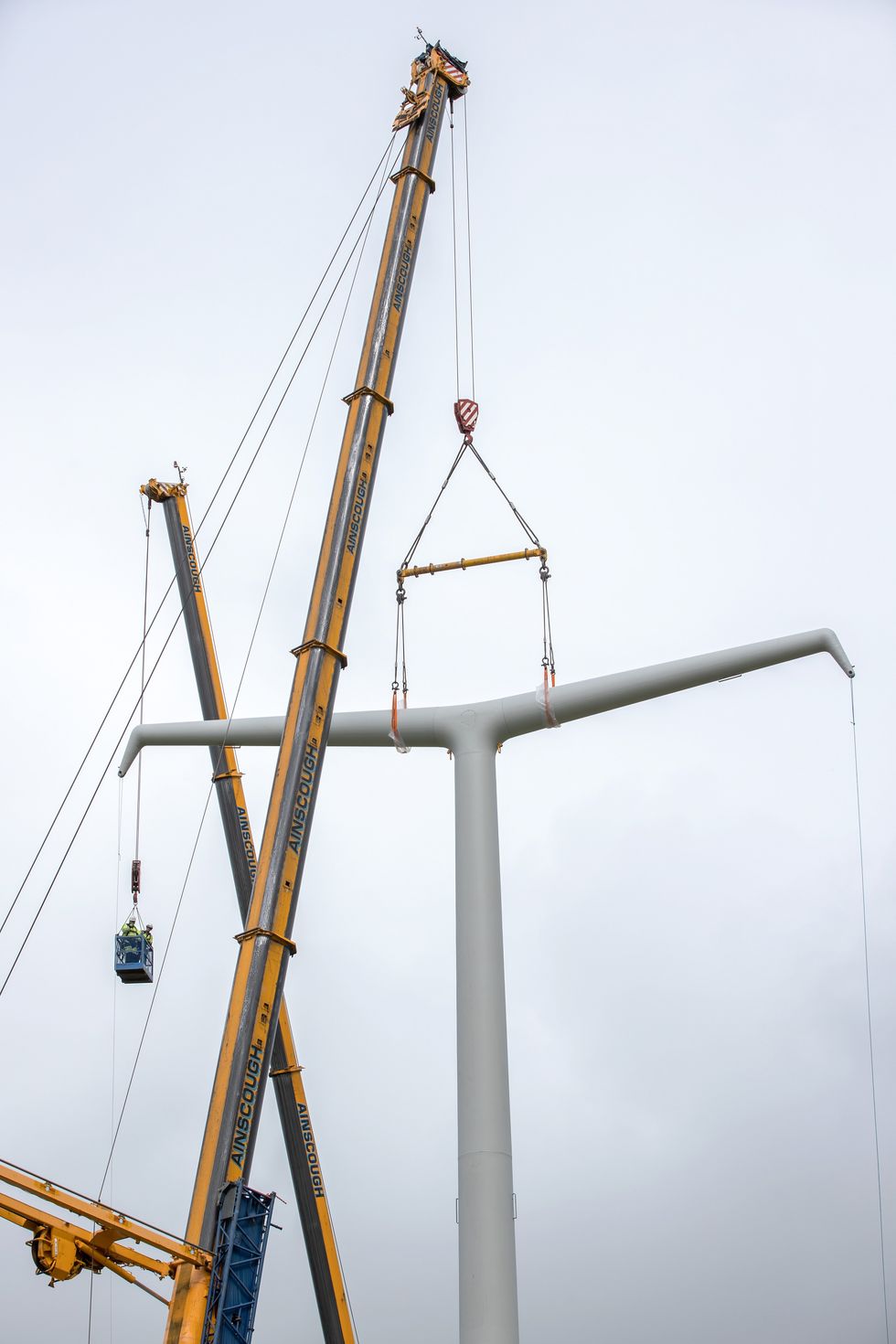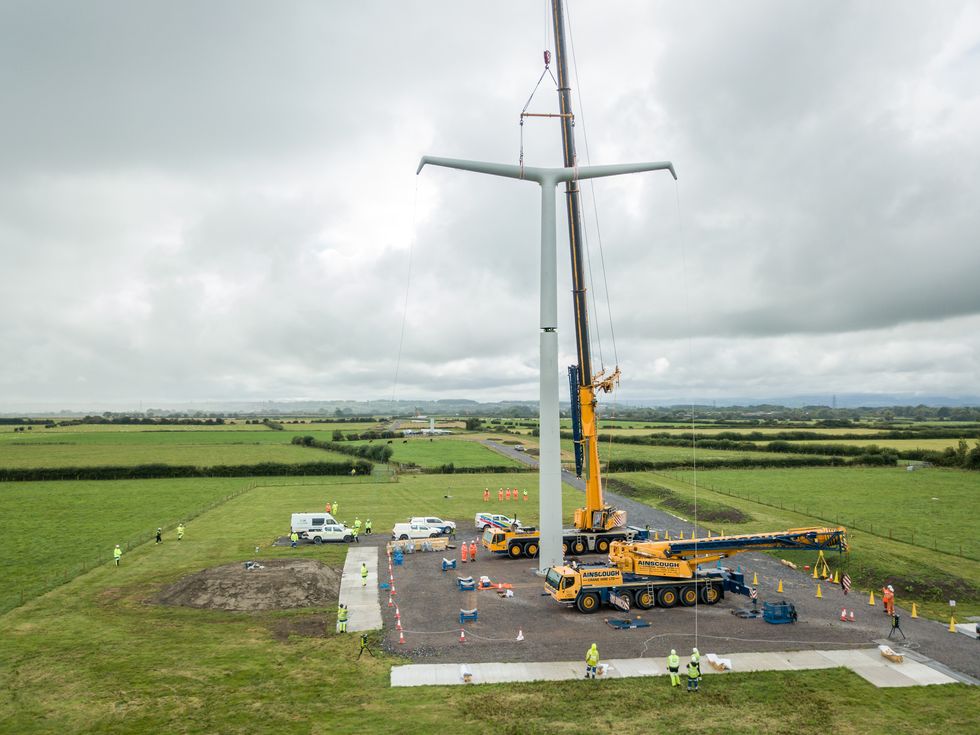The National Grid has effectively abandoned its £17million T-pylon project after installing the futuristic structures in just one location in Somerset.
The controversial pylons, which were meant to revolutionise Britain’s electricity infrastructure, have been plagued by multiple issues since their installation in 2021.
Residents near the Somerset site have complained about “horrid” and “really spooky” whistling noises emanating from the structures during high winds.
The T-pylons, which stand about a third shorter than traditional lattice designs, have also faced problems with localised flooding around their bases due to their large foundations.

T-Pylons in Somerset
PA
Documents seen by The Telegraph reveal the National Grid has identified numerous issues with the design, leading to its exclusion from the Government’s major net zero pylon expansion plans.
The project marks a significant setback for the utility company, which had heralded the T-pylons as the “vision of our electric future” in 2015.
The T-pylon design emerged from a 2011 competition run between the Government and National Grid, with Danish firm Bystrup selected as the winner.
Then-energy secretary Chris Huhne championed the project, stating it was important that the rollout of net zero pylons was done in “the most beautiful way possible”.
LATEST DEVELOPMENTS:

The T-Pylons project cost the National Grid around £17million
PA
The distinctive design features a single solid steel pole with diamond-shaped “earrings”, resembling golf tees according to some observers.
After investing £17million in development, the National Grid installed the T-pylons along the Hinkley Point C nuclear station connection in Somerset in 2021.
The structures were intended to be the first major change to Britain’s pylon design in nearly a century, offering a smaller footprint than traditional lattice towers.
However, the project has failed to expand beyond its single installation site in Somerset.

Construction crews in Somerset in front of UK’s first T-Pylons
PA
The slender design of the T-pylons requires significantly more steel than traditional lattice structures, making them considerably more expensive to construct.
Ofgem, the energy watchdog, criticised the National Grid for failing to justify an additional £65million cost for the T-pylon technology in the Hinkley Point connection project.
This included £48million for extra steel and larger foundations – approximately £330,000 per pylon – on top of the £17million development costs.
The National Grid’s own documents acknowledged public resistance to the new design, noting: “Traditional lattice structures have served the nation for the past 60+ years and have been very reliable and resilient throughout.”
Danish firm Bystrup’s attempts to reduce costs by shortening the design by 8 metres have been unsuccessful, with founder Erik Bystrup confirming their proposals “haven’t been able to succeed”.
A National Grid spokesman defended the project, stating: “Our Hinkley Connection Project, which includes T-pylons, is nearing completion and will help power six million homes with clean electricity.”
The spokesman insisted the design had been “well received by the community, who showed a preference for it during consultation.”
The company maintains it considers all technology options for future projects, including offshore, underground, and overhead lines.
Addressing cost concerns, the spokesman noted: “The cost of all National Grid Electricity Transmission activity across England and Wales, including the Hinkley Connection Project, amounts to around £25 on the average annual household electricity bill.”
Despite these assurances, the T-pylons remain absent from future infrastructure plans, with the National Grid reverting to traditional lattice structures for new projects.